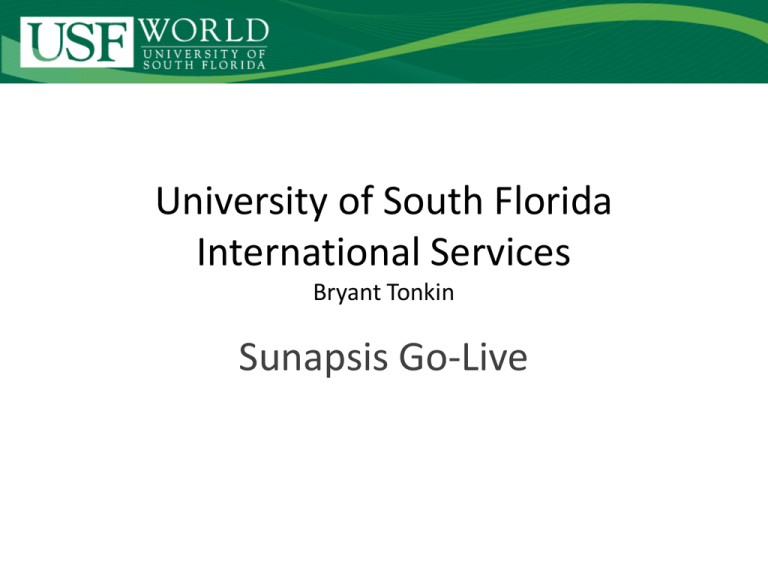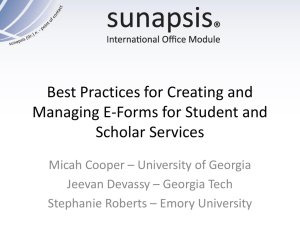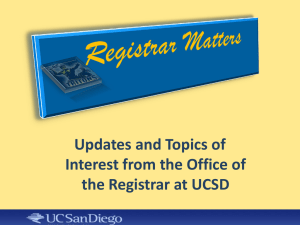USF Powerpoint
advertisement

University of South Florida International Services Bryant Tonkin Sunapsis Go-Live Pre-Sunapsis Status • SIS: Banner • SEVIS Batching System: SEVIS Connection (fsaAtlas) • Batching F1s only • SEVIS Connection and Banner reporting handled in-house by International Services (Bryant) • Physical paper files for everyone Timeline • • • • • • • • Nov 2012 – Initial request for IT approval submitted Mar 2013 – IT approval received & Sunapsis purchased May 1, 2013 – Received Sunapsis 3.0 files June 7, 2013 – Servers operational inc. SSO & DBs July 1, 2013 – Student data feed starts running July 22, 2013 – Site visit! July 29, 2013 – Sunapsis officially in service Aug 26, 2013 – Fall 2013 term started (~3000 students) Current Status October 2013 • • • • • Batching both Fs and Js Completed batch registration for Fall Getting comfortable with the alerts Started using Templates to create new I-20s To Do: – Employee data feed – E-Forms – Checklists Task Server and Database Performed By Primary Tasks Campus IT Difficulty Low ColdFusion IS – Bryant Low Load Sunapsis IS- Bryant Medium Single Sign-On Campus IT Low Student Data feed IS – Bryant High Configure Sunapsis IS – Bryant High Data Conversion Sunapsis Team & IS Bryant Low Data Feed Tips • Get started early (datafeed.xsd) • Be flexible (the data feed might need changes once you see where the information goes) • Keep the population reasonable (size = time) – ~8200 students = ~47Mb = ~7hrs • Don’t forget to account for records that no longer fit your data feed population – COS records – Grace periods – Dropped classes Site Visit / Data Conversion Tips • Have the mapIDNumbers table (SEVIS ID to U ID) as complete as possible (saves cleanup time after the data conversion) • Have as many DSOs as possible available, each with a Sunapsis ready computer and Sunapsis account • Be ready to make the switch to Sunapsis Tips (Other) • Give yourself time: • Get familiar with the base functionality (alerts, batching, timing of updates,…) before you tackle E-forms, checklists, etc. • Be flexible your implementation schedule • Establish SOPs • Pay special attention to Change of Levels Thank you






